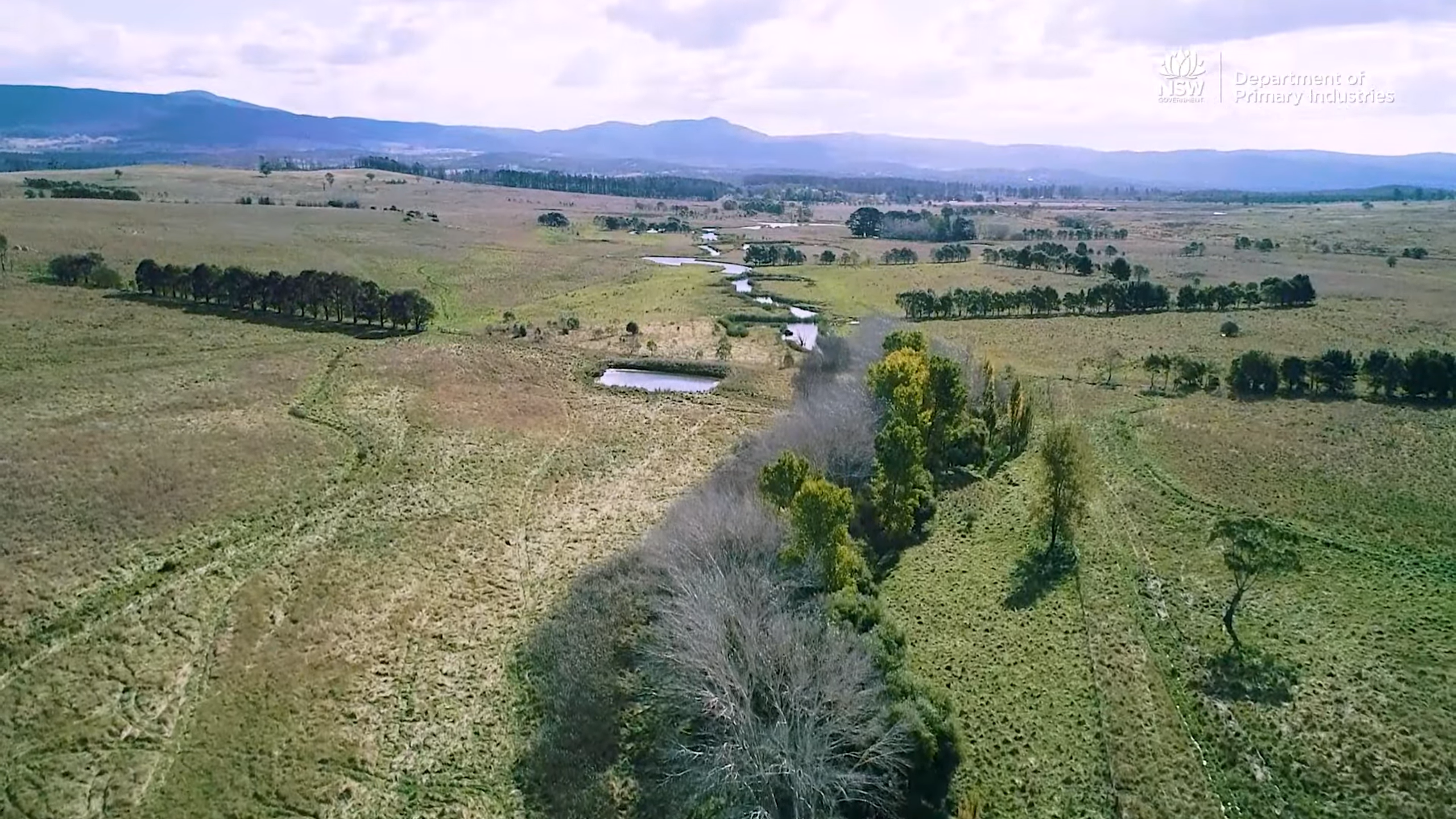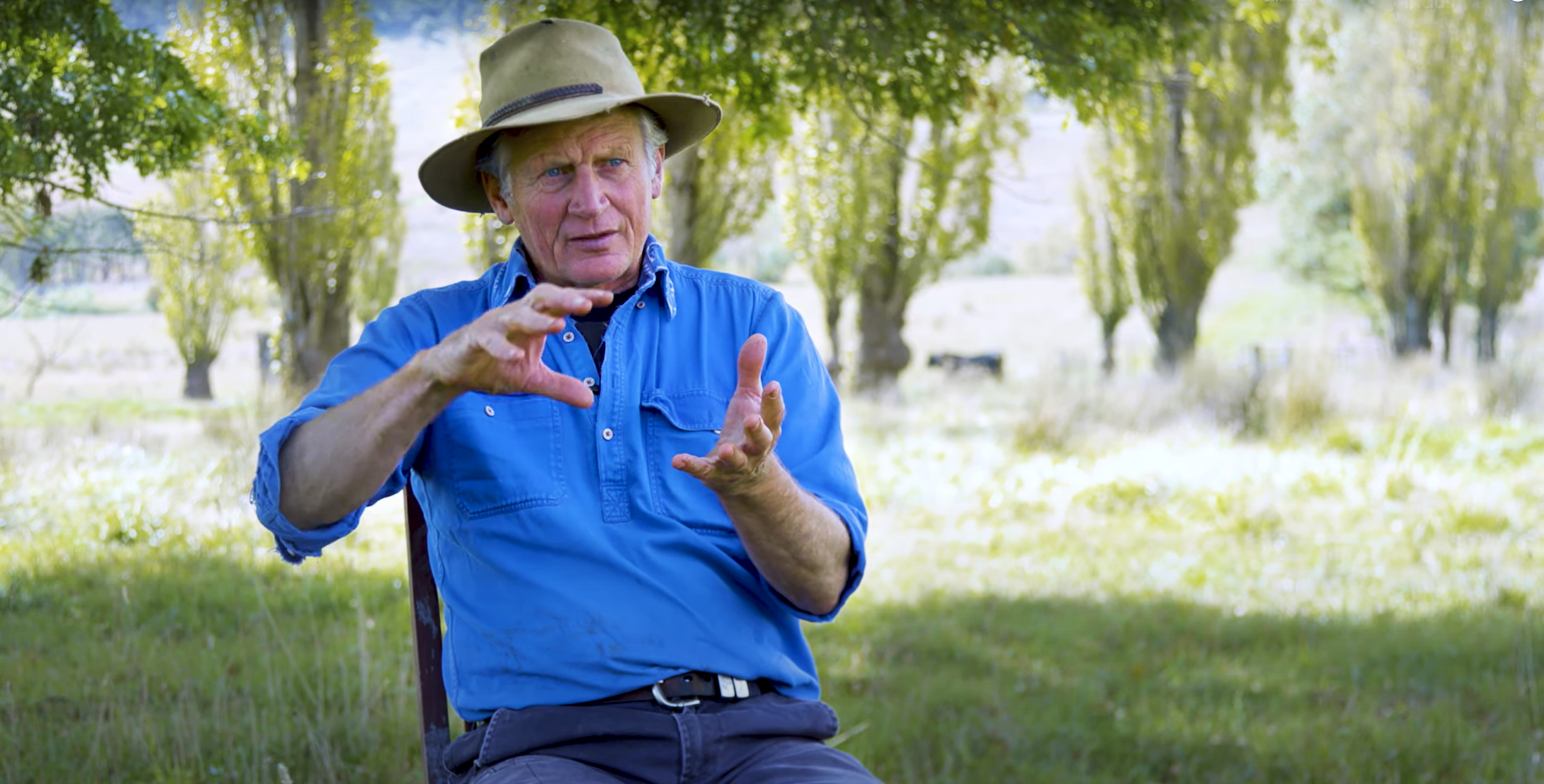Observing resilience at Jillamatong
Rehydrating landscapes for drought resilience
During the 1982 drought, Martin saw topsoil blowing off the hillsides of his farm. Gully erosion was rampant, and when the rains eventually did come, most of the remaining topsoil and organic matter was washed away. This sent him on a journey to ‘turn things around’.
“I had always set out with the goal to question the ways we farm and had been trialling different ideas from the early 1980s.”
A major catalyst for change on Jillamatong came when Martin attended a talk by Dr Stan Parsons and Terry McCosker on holistic management. This reinforced the need to focus on building healthy soil, pasture and water cycles. He changed his thinking from ‘how many cows have I got, to what’s my goal’.
“Managing with the holistic framework and mindset means making decisions ahead of time, being proactive instead of reactive and building resilience before an event happens.” – an approach that has benefited Martin, especially with more frequent and longer dry conditions of recent years.
We recently caught up with Martin to find out how he’s been going since our last visit (read his full case study from 2017 here) and hear about the resilience he is building in the landscape in the face of dry years.
Martin has focused on trialling and implementing practices to improve the water cycles, fertility and biodiversity in the landscape, and so we asked him how these three areas are progressing.
A video collaboration between NSW DPI and Soil for Life featuring Martin Royds at Jillamatong near Braidwood NSW
1. Slowing down the movement of water through the landscape
I’ve been fortunate to get hold of some of the best people to get insights into how to work with the land to build resilience into it.
One of the first steps that Martin took to start improving the landscape’s function was to install a leaky weir. In 2005 Jillamatong had a severe erosion gully running down the middle of it, draining water and fertility off the farm. Following the advice from Peter Andrews OAM, Martin installed the weir in the gully and has since seen a slowing of the movement of water through the landscape with more water stored in the landscape and available during drier times.
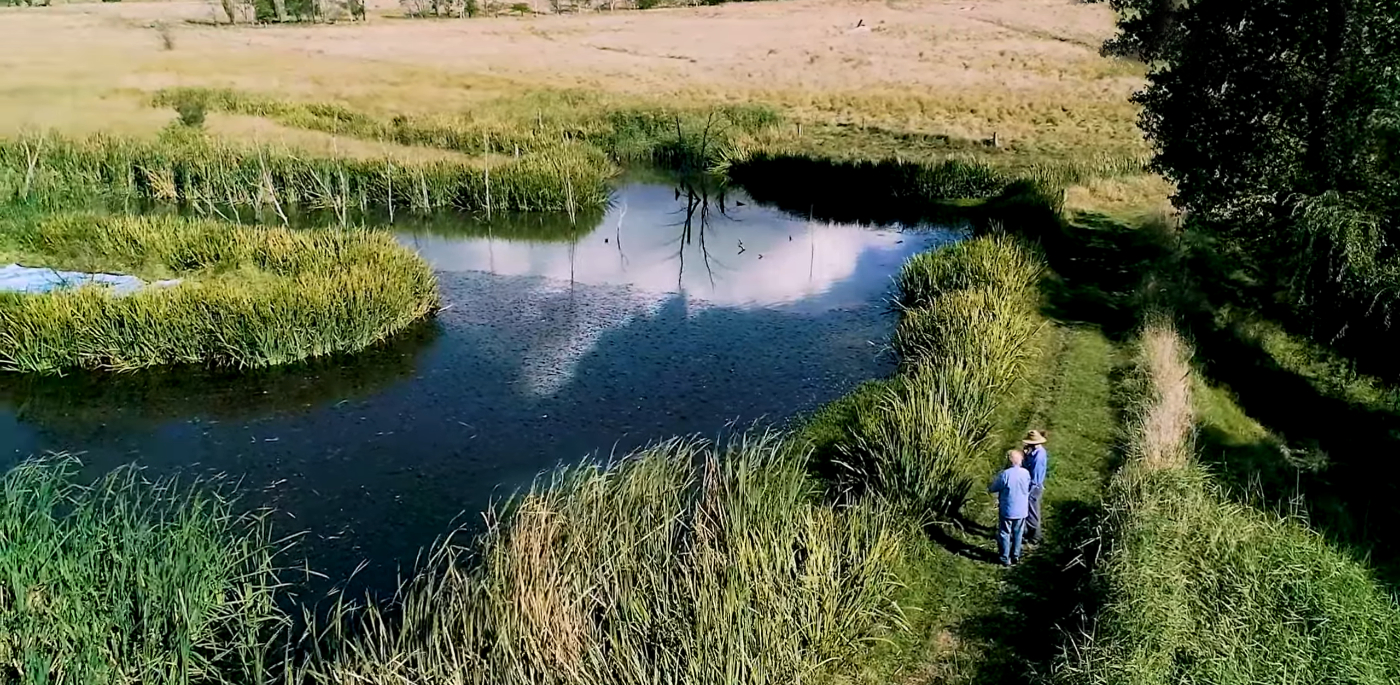
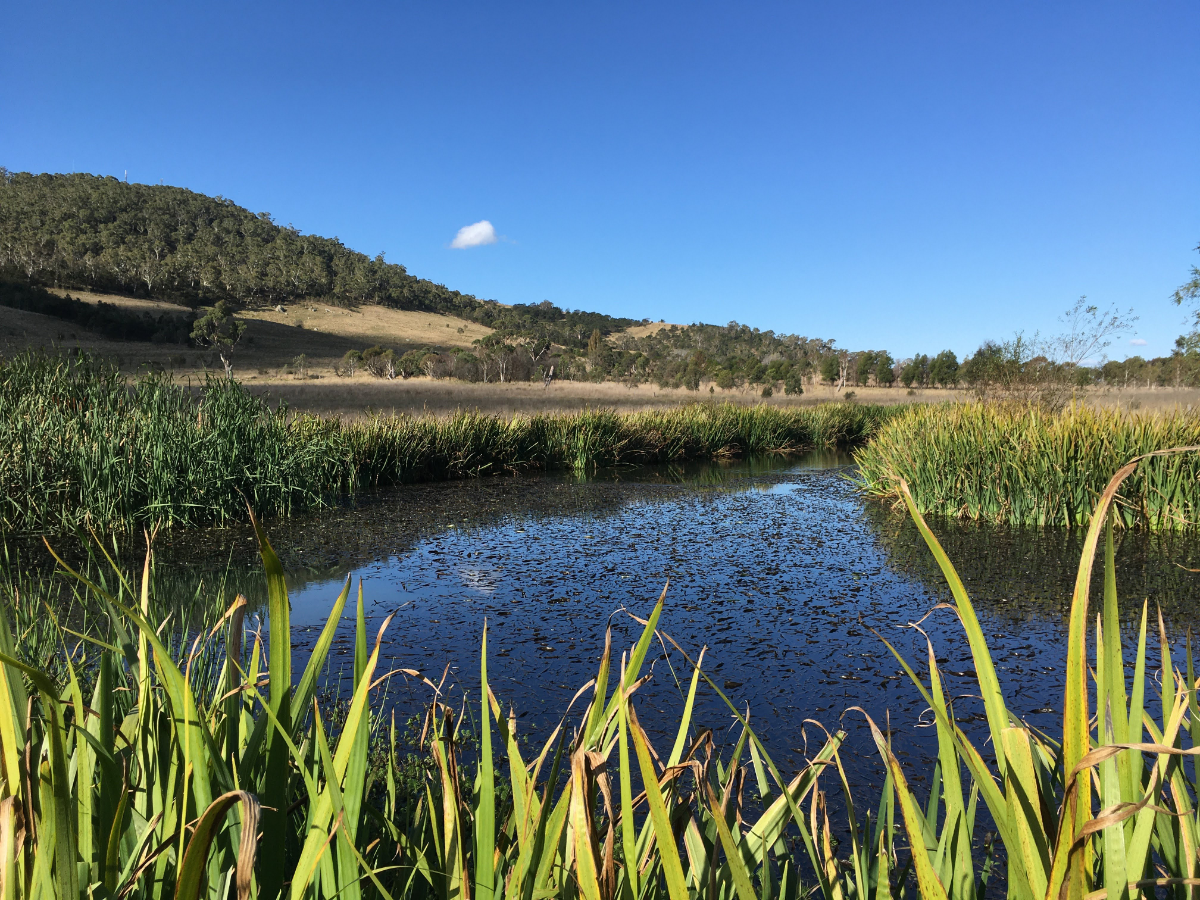
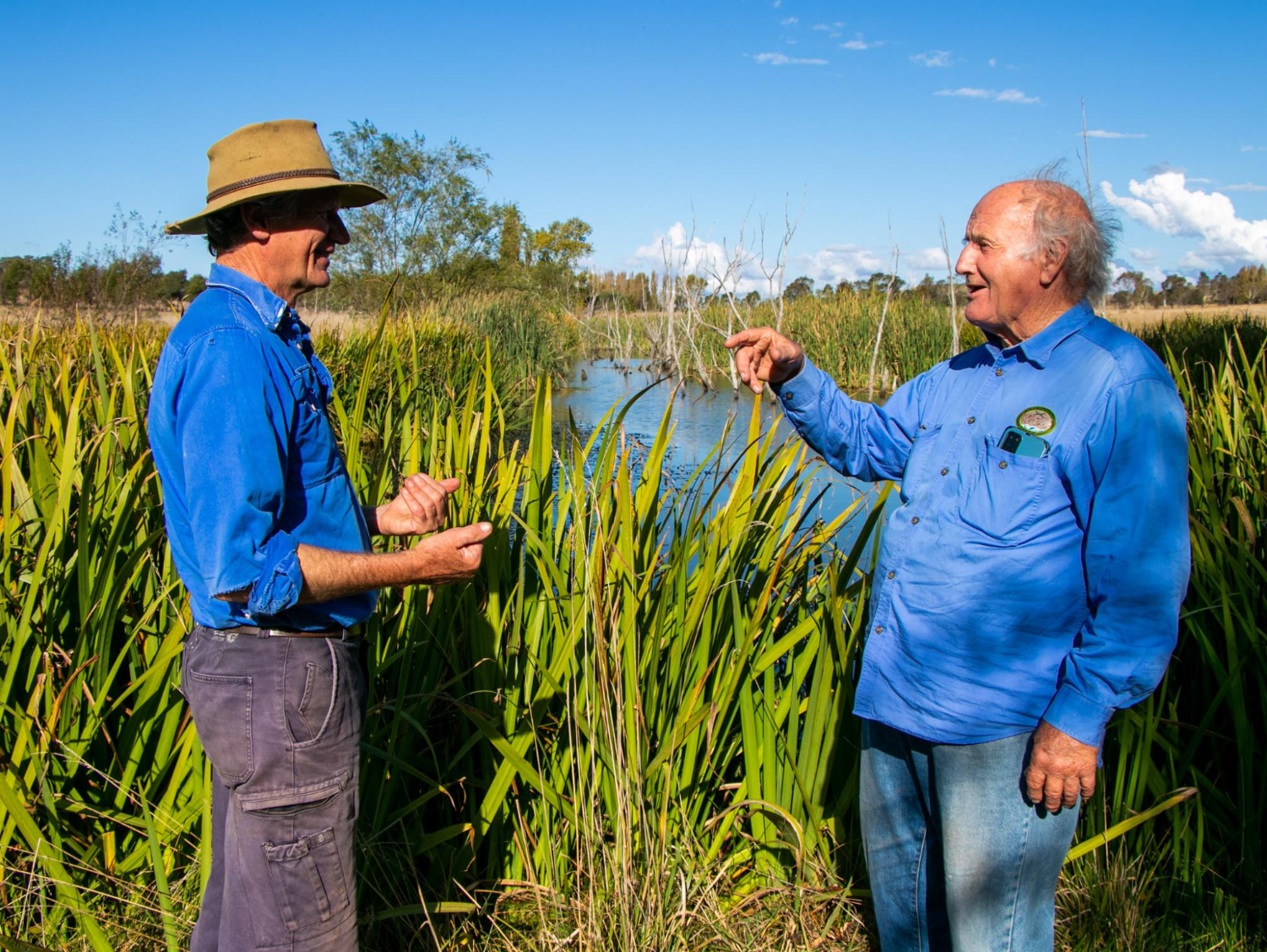
Martin Royds and Peter Andrews observing the benefits from Martin and Peter’s first leaky weir on Jillamatong. Martin notes: “…they filled up in the first rain even in the middle of winter and since then they’ve been full of water.”
The benefits observed since having more water in the landscape
Martin has noticed an increase in extreme weather conditions, with more frequent and longer dry conditions occurring. “The Shoalhaven river went bone dry. Mongarlowe river went dry for the first time.”
Through slowing down the movement of water through the landscape and improving his biodiversity, ground cover and soil health, Martin feels that this has led to improved landscape function, which allows more water to be stored within it.
This resilience has been invaluable during dry times.
2. Moving fertility back up the hill
“How do I get fertility back up the hill, and then let gravity bring it back down again?”
Moated dams in the low points of the landscape capture fertility which contributes to lush areas of plant growth. The cattle graze these areas and then take the fertility back up the hill as they move higher up during the later parts of the day.
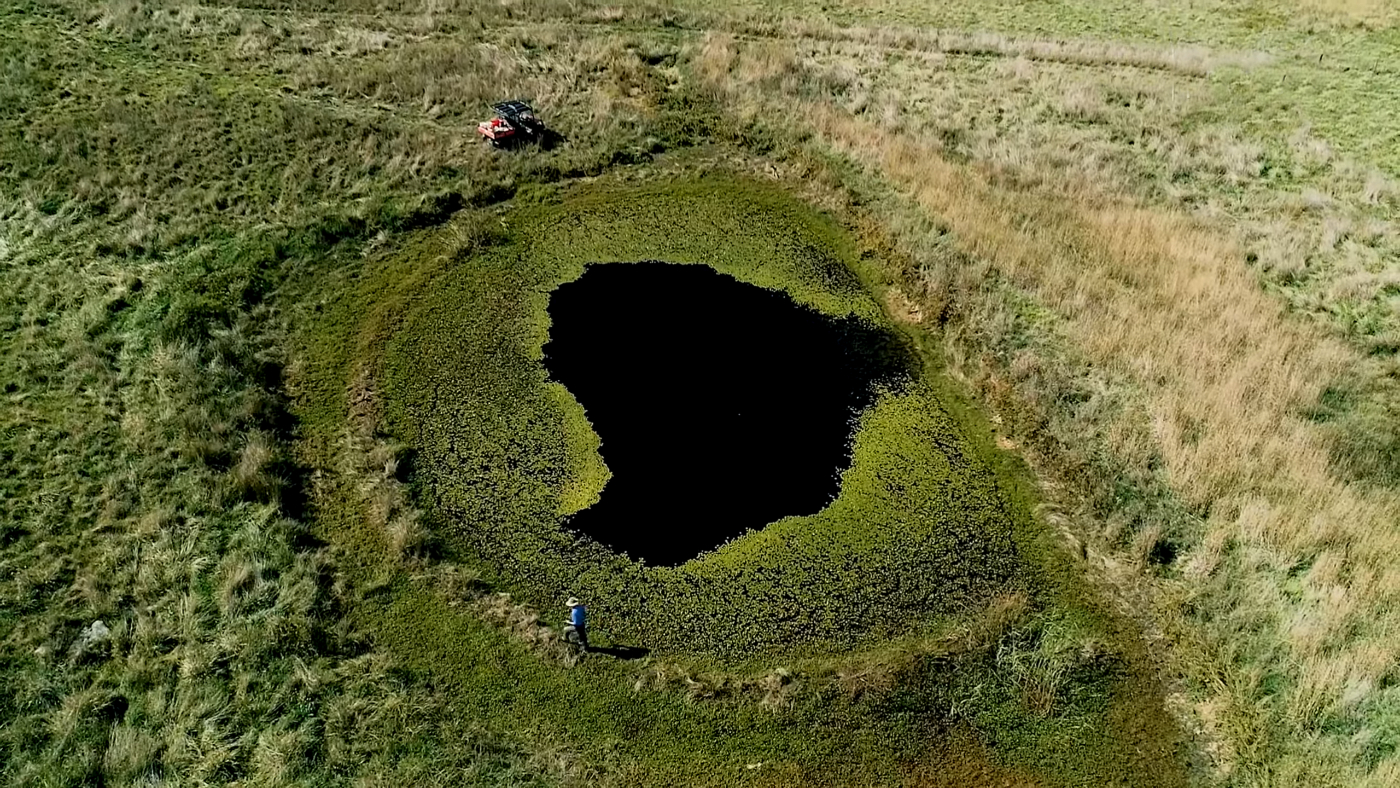
One of Martin’s moated dams, which harvests the fertility coming down the hill and makes it available to cattle in the form of plant matter, to take back up the hill.
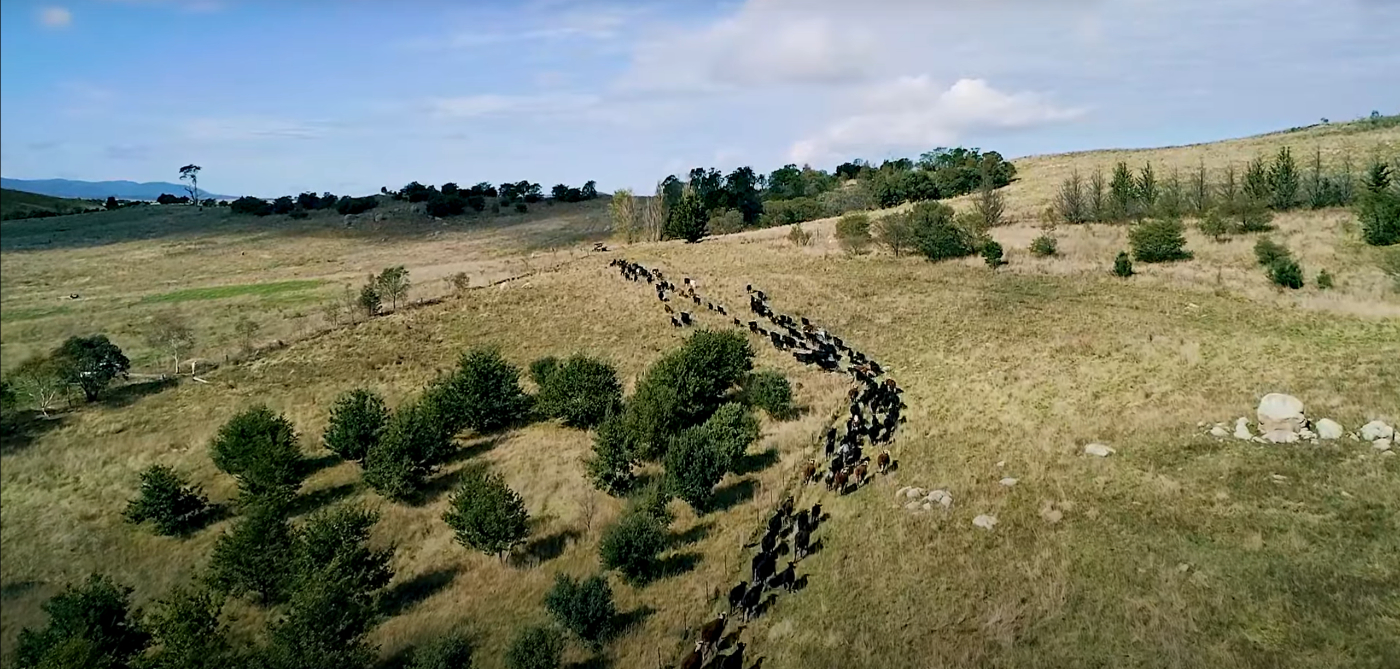
One of the biggest changes that Martin implemented was to divide his existing 12 paddocks into 53 paddocks and to run them lengthwise up the side of the slopes, instead of along the contours.
This allows the cattle to graze the low points of the property, where there’s lots of fertility and ground cover, and slowly move it up the hill as they graze the higher parts of the property later during the day where it’s cooler in summer and warmer in winter.
3. Encouraging biodiversity
A third focus for Martin has been to foster biodiversity on the farm. “I had to start learning about all the different species of grasses and herbs in the pasture.”
Having previously been a contract sprayer and experiencing severe health issues as a result, Martin wanted to change course. He stopped spraying and ploughing and instead used cattle and rotational grazing as his main tool to manage the pasture.
“I used to spray or plough and then sow three grasses and two clovers. I now have over 80 species of grasses and herbs in the pasture”
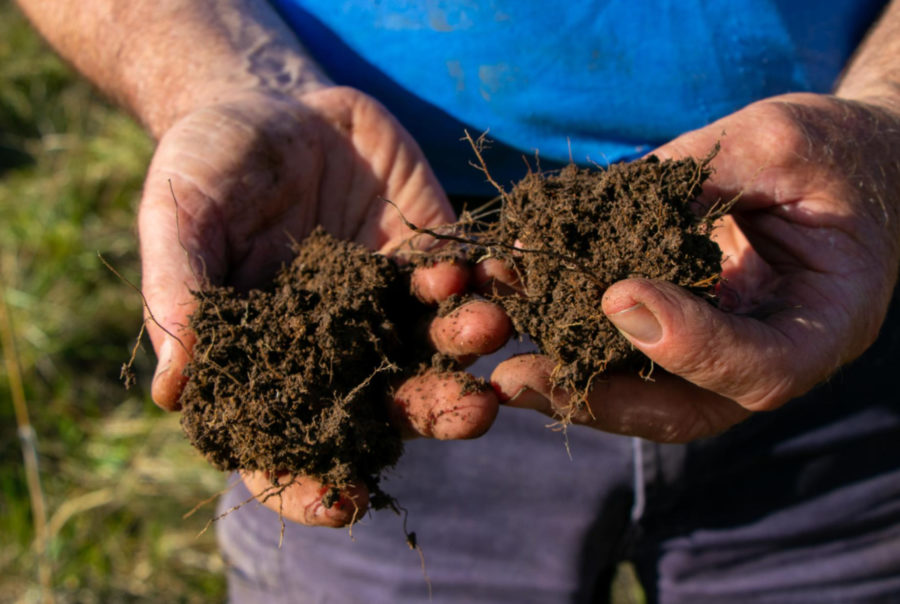
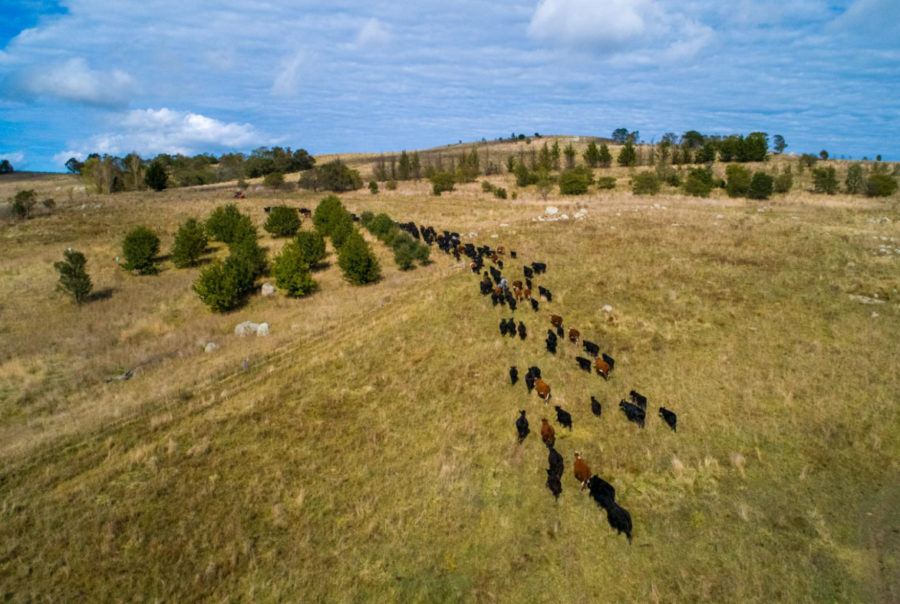
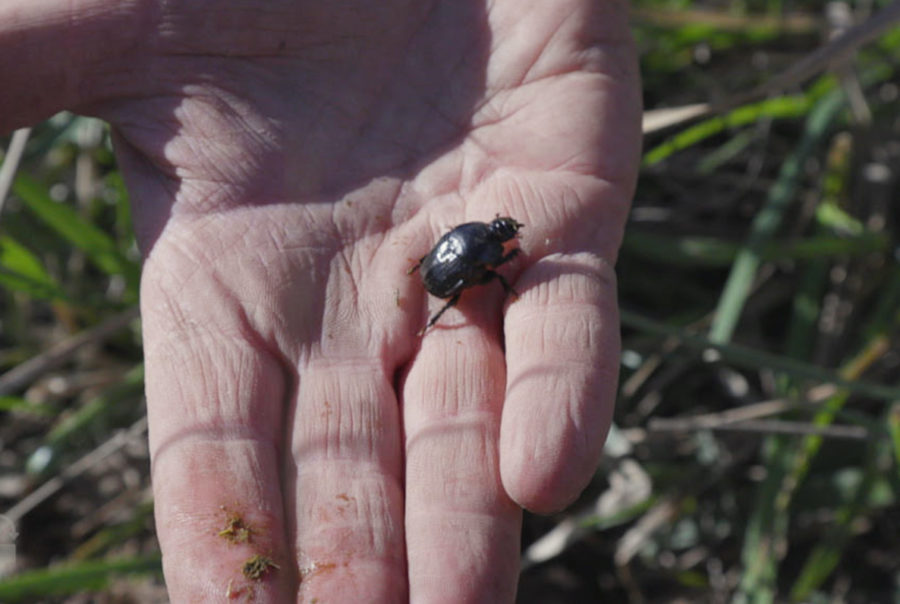
The benefits observed since having more biodiversity
“Once you seem to get over at least seven species of grasses…there’s something that happens down in the soil, that, everything comes to life.”
Martin notes that he now has over 80 species of grasses and herbs in the pasture, each one in a different part of their cycles at a different part of the season. This means that he has much better ground cover year round through different conditions.
He also noticed the landscape recovers quicker after drought and fire events compared to neighbouring properties and holds more water, with Jillamatong having a running creek during the last drought.
With the increased ground cover, he has noticed that ‘water is running off clean during rain events, it’s not muddy and I’m not losing topsoil.’
His cattle seem to stay fat, having more ground cover to feed on and a bigger diversity of plants to choose from. “I used to spray the things they now eat first, like Chicory and Sorrel. They are now self-selecting what they need nutritionally from more diverse pastures.”
Martin started planting trees mainly as windbreaks. He has since started widening his tree corridors, realising that they attract more biodiversity and provide shelter. He notes that birds move into these corridors and predate on the insects that cause problems in the pasture. He also notes: “I see that as my haystack in dry times”
Looking ahead
We asked Martin what he’s keen to trial or implement in the coming seasons.
I’d like to plant more trees to create habitat for more biodiversity. And I’ll continue to add more contour channels and leaky weirs to slow the movement of water in the landscape. I’m also planning to put more compost out into my compost contour system.
I’m interested in learning more about healthy ponds and dam ecosystems and how plants harvest water. And I’d also be interested to monitor how much healthy soil is being built.
I’ve also started thinking more in generational terms, trying to adopt a much longer term thinking to how I make decisions.
Thanks Martin for your time, and for so generously sharing your knowledge and experiences! Martin regularly holds farm tours to share all the practices that he has implemented at Jillamatong.
For more information
If you have any questions, get in touch at [email protected]. You can hear more from Martin in our recent Podcast episode ‘Weeds are telling us something. Are we listening?‘



